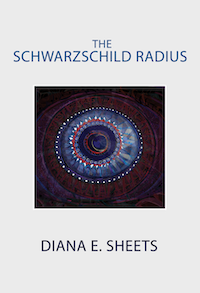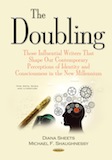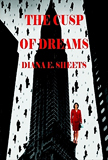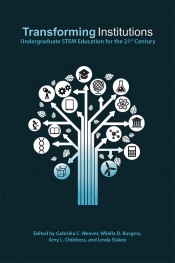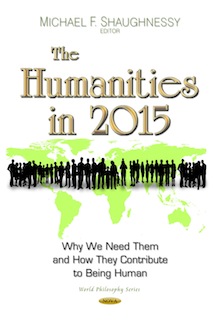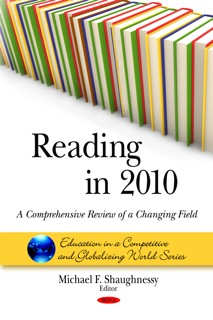The "Pink and White Tyranny" & Its Toll on Fiction
Copyright © 2007 by Diana E. Sheets
The publication of Sandra Gilbert and Susan Gubar’s The Madwoman in the Attic (1979), an impassioned argument against the exclusion and misrepresentation of the work of female writers, was a watershed. By the 1980’s literary fiction was undergoing a metamorphosis from the masculine domain of events, abstract analysis, linear trajectory, and conflict to the feminized realm of internalized, moralized, intrinsically circular, and relativistic precepts. No longer would women be satisfied praising and extolling male literary genius while remaining content to reap the profits that accrued to the sisterhood through the publication of pot-boiler romances and mysteries. In the literary world, feminine “virtues” were ascendant. Why did this transformation take place, and what might the consequences be?
Ann Douglas argued in The Feminization of American Culture (1977) that the social shift from an austere male “Calvinist” theology, predicated on paternal and authoritarian precepts, to a maternal and emotive religion, based on forgiveness and empathy, gradually occurred during the period 1820-1875. This changing perspective was propelled by a society that increasingly embraced capitalism and mass culture. Clergymen, no longer protected by state subsidy, had become marginalized from the economic sphere. They attempted to exert influence by aligning with those affluent and genteel women Harriet Beecher Stowe referred to as the “Pink and White Tyranny.” These ladies sought stature and power by means of feminine “virtues” explicated in the mass-circulating novels of “Victorian”
If Uncle Tom’s Cabin became a bellwether of sentimentalized fiction in 19th century
Don’t you buy it—don’t you read it when it does come out, because it is by no means a sort of book for you. It is not a piece of fine feminine Spitalfields silk, but it is of the humble texture of a fabric that should be woven of ships’ cables & hawsers. A Polar wind blows through it & birds of prey hover over it. Warn all gentle and fastidious people. The Feminization of American Culture (New York, 1998), p. 296.
Given Melville’s focus, Douglas suggested, on “the lost, the overlooked, the forgotten, the obscure, and the inaccessible” in his fiction, his reliance on economic facts, his predilection for masculine themes and realistic characters, and his relentless insistence on intellect, it is hardly surprising that his novels received a smaller readership than those of any other major American writer.
The origins of this gender warfare date back to the foundation of the modern literary novel. Laurence Sterne’s The Life and Opinions of Tristram Shandy, Gentleman (1759-1768) was influenced by Rabelais and Cervantes. TS subverted the traditional confines of narrative chronology through a stream of consciousness methodology filled with digressions, interruptions, and stories-within-stories as presented by a narrator doubtful of the certainty of his self-knowledge. It is thus regarded as the precursor of the postmodern, experimental novel. Contrast the clever high-jinks of TS with Jane Austin’s Pride and Prejudice (1818), which was published fifty years later. P&P was a comedy of manners in which sentiment, though tinged with irony and social perspective, nonetheless, assumed center stage. It was a tale in which plot was never subverted. It was a story in which the prospects regarding matrimony were positively enshrined, and a narrative in which the hazards of navigating the social and economic minefields of parish communities were ever present.
There you have it. The quintessential examples of male and female literary novels, respectively, experimental versus conventional, each with only the barest ties to commerce and struggle and deprivation. Zoom forward to the present and consider the consequences of a fictional domain in which love and sex and emotion prevail at the expense of intellect and innovation and the asphalt of the real. The dimensions of the horror show—the elimination of masculinity and all that is disturbing and violent and transforming—are not so difficult to conceive, thanks to the studies by Louann Brizendine and Camille Paglia.
In The Female Brain (2006), neuro-psychiatrist Louann Brizendine postulated that our brain architecture accounts for behavioral differences between women and men. Women, she suggested, have eleven percent more neurons devoted to language and hearing—functions critical to emotional memory—than men. They have more “mirror neurons,” enabling them to observe and emulate the feelings of others. Their Anterior Cingulate Cortex, site of anxiety and decision-making, is larger, making women more prone to stress and worrying. The Prefrontal Cortex is larger and matures earlier in women, and, as a result, they exhibit greater self-control and less aggression than men. The Insula, seat of intuition and empathy, is larger and more active in women, enabling them to better read nonverbal cues evident in facial expressions. The Hypothalamus, the hormone control center, is active earlier in women, which makes them more sensitive to hormonal changes. The Amygdala, site for aggression, anger, and fear, is smaller in women, which, in turn, causes them to be less physical and less inclined to fight. The Pituitary Gland, home to the maternal instinct, interacts with the hypothalamus to regulate hormones. During pregnancy it activates milk production and facilitates nurturing. The Hippocampus, larger and more active in women, is the center for emotional memory. It forms, stores, and accesses memories, permitting women to recall emotional events with greater ease and precision. These distinctions, Brizendine argued, are crucial to understanding what shapes female behavior and outlook.
Sexual Personae (1990) by Camille Paglia explored the archetypal behaviors of men and women and their consequences in shaping western civilization. Her intricate argument may be distilled down to these basic premises. Society is an artificial construct against nature. The achievements of western civilization from antiquity to 1900 were unparalleled and, almost exclusively, the province of men. These advances were Apollonian, pertaining to Apollo, god of sunlight, prophecy, music, and poetry. The Dionysian impulse, a “chthonian” force of nature, is characterized by Palgia as “the blind grinding of subterranean force, the long slow suck, the muck and ooze.” This impulse, she continued, is “the dehumanizing brutality of biology and geology, the Darwinian waste and bloodshed, the squalor and rot we must block from consciousness to retain our Apollonian integrity . . . . .” The consequence, Paglia maintained, is that men and women are ceaselessly engaged in gender warfare as the male, ideally, strives for intellectual achievement while the female, almost universally, seeks to fulfill her biological destiny. These drives are intrinsically at odds. Because of her potential to subdue, subvert, and annihilate his dreams, she has the potential to suck dry his creative life force. For this reason, she represents the Vampire incarnate.
For the sake of argument, let’s accept that the cognitive neuroscience presented by Brizendine and the archetypes postulated by Paglia are approximations of truth. And let’s agree that over the past twenty-some years that academe and publishers have become feminized as women have increasingly become professors and editors and publishers. Let’s also acknowledge that profitability dictates the choices and selection of fiction and that editors are rewarded and punished based on how well their fiction “performs.” Given the overwhelmingly female readership of fiction, given the financial incentives of the marketplace, given the social predilections for emotional engagement at the expense of daring innovation, given the precipitous decline of readership as a percentage of the total population, what publishers are prepared to take a risk? The vetting process has all but closed the door to creativity. One must have a prestigious M.F.A. One must be published in highly selective literary magazines. One must have endorsements by well-known writers and editors. One must write the prerequisite types of stories and have the appropriate worldview. Editors and publishers dare not take a chance. All are agreed. No one need think. In the meantime, the stable of literary authors gets older and nominally more celebrated while becoming increasingly irrelevant. The fiction they write is predictable, within unspecified but, none-the-less, inflexible boundaries. The result is an assembly line of false virtue and sentiment with just the appropriate hint of pathos. No real carnage. No real despair. So boring that the few remaining intelligent readers seeks refuge in nonfiction or, in desperation, turn to film. But film is visual. Language is distilled down to nothing. Words? Inconsequential. Action? Everything. Consciousness? Zero.
And what may we conclude?
Contemporary literary fiction is emotive. It is an incubator for feelings. It is about consciousness, but that consciousness has love at is core—bad love, good love, the void felt in the absence of love, parodies of love, mockeries of love, perversions of love. Real-world violence is absent, except in so far as it can be represented within the context of family or romance. Intellect is eschewed as depersonalized and cold. Abstract ideas are jettisoned. The clever or ironic is accepted, provided it never strays too far from love or sentiment or family. The literary novel is a retreat from the world. It is a domestic romance that renounces all that threatens us. Because it is not of this world, not in this world, not reacting to this world, it is, necessarily, all about nothing. It has no stake in the REAL. It is devoid of CONTENT. Utterly useless. Readers demand less and less while emotionally hankering for more and more. Under these conditions, even formulaic genres—mystery, techno-thriller, and science fiction, the few remaining areas open to testosterone—by comparison, seem almost preferable.
This is the dismal state of literary fiction today. One novel is indistinguishable from the next. All are derivative. The literary reader is a sentimental junkie. She reads—if she reads at all—and is never satiated. Ask her what memorable story she has enjoyed, and she’ll have trouble recalling. In a panic, she’ll cite one of the best sellers. Or name some “scantitillating” memoir. Or the latest nonfiction. But nothing unusual or distinctive or challenging. Just whatever she’s been conditioned to buy. Her mind—if she is still hungers for a real novel—is starved for nutrients. But her sucrose levels are off-the-scale. She has been desensitized to the REAL. She is deprived because her palette knows only Saccharin. If only she realized.
What The Feminization of American Culture did not fully anticipate was the extent to which the feminine, mass-market tastes of the 19th century would become the universal standard for all fiction by the end of the next century. The Female Brain suggests the means by which the architecture of the brain influences women’s choices and determined this outcome. Sexual Personae illustrates the war between the sexes and what is at stake in the battle to continue to advance the culture.
The final consequence? Publishers no longer rely on romance novels to subsidize the Great American Novel. What sells the most is the most. And so sentimental fiction, horrific memoirs, celebrity bios, and obscenities fashioned as creative nonfiction are today’s literary diet. The “Pink and White Tyranny”—that “chthonian” Dionysian vampire—has sucked the lifeblood from the Apollonian culture warrior. His tragedy is nature’s triumph. Her children, standard bearers for our decadent society, reign supreme. And those of us who strive for Apollonian heights shed the bitterest of tears while we arm ourselves to go to war.


